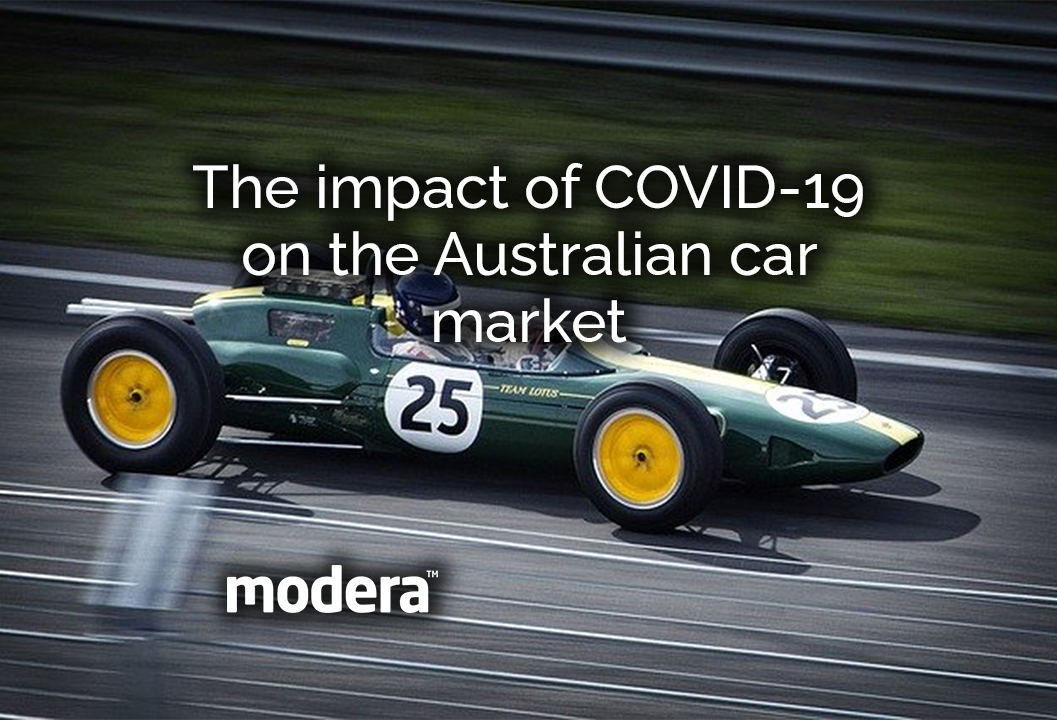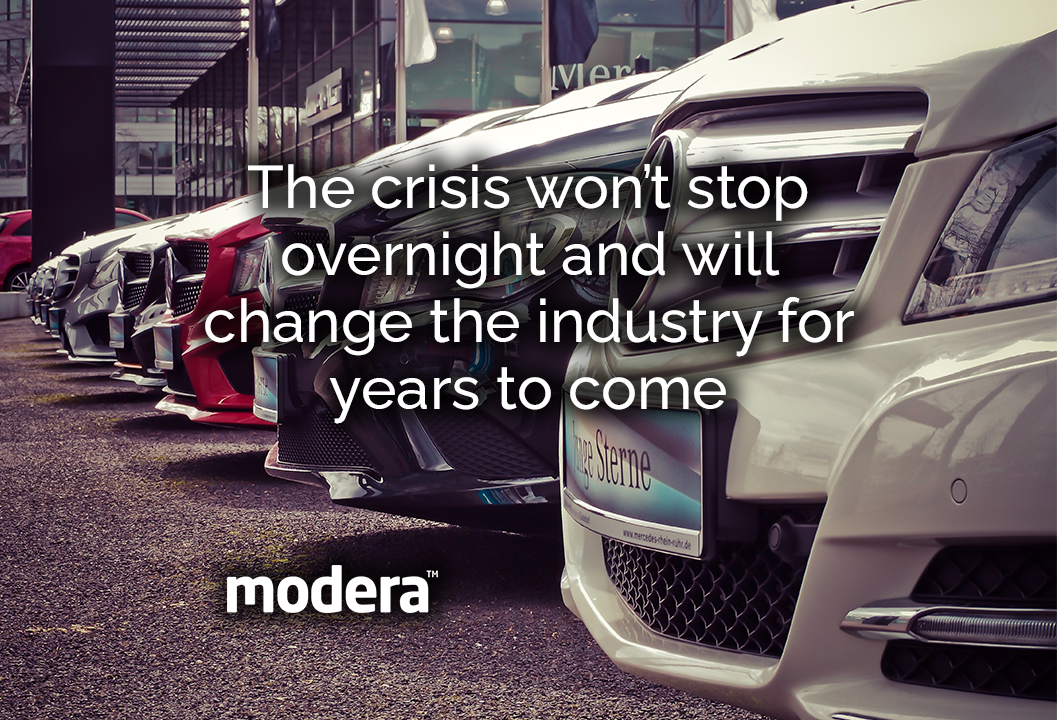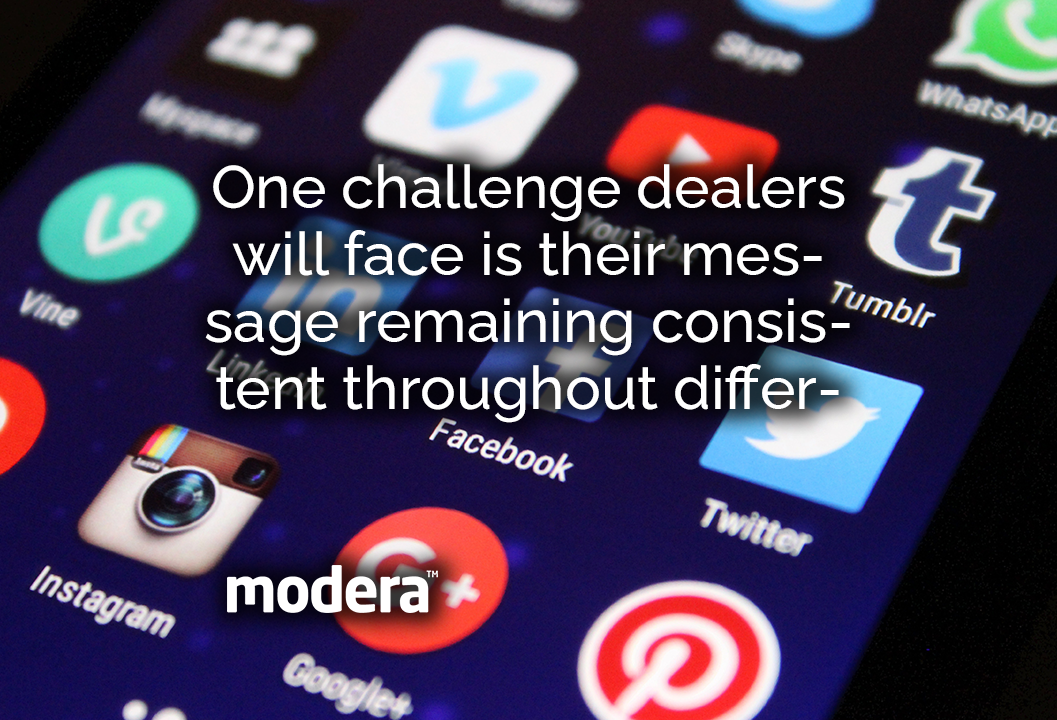Talking Automotive with Mark and John is a new podcast hosted by industry experts Mark Palavestra and John Sinclair. They both have 35+ years of experience in the automotive industry. John and Mark hope to add value to the industry from an open-dialogue perspective.
In this episode, Mark and John discuss the changes in the automotive sales industry due to COVID-19. They offer perspective on how dealers can bounce back post-pandemic.

Meet John
John Sinclair is a senior automotive executive with over 39 years of experience. He has worked in the automotive industry throughout the globe. John started his robust career as a management trainee at Nissan in South Africa. His career boasts experience in after-sales, trucks, sales, and finance.
Highlights from his career:
- Setting up and managing French Arms networks, including Fiat in South Africa
- Working in the Nordic countries and the Baltics
- Joining the Australian auto market

Besides launching his podcast with Mark, John keeps busy with two projects. He is currently working on establishing Modera- an automotive software company -in Australia, New Zealand and South Africa. The company it originates from Europe, where it was first set up.
On top of that, he is working on an exciting project with his other company, Our Collab. The project will have a great impact on emissions, by bringing a diesel and fuel-incentive to the market.
Meet Mark
Mark Palavestra is an Australian automotive executive. He has experience in all areas of the industry, including sales, after sales, and marketing. Mark grew up in a small country town, dreaming of running away and joining a formula one team.
Highlights of his career:
- Working in a multi-franchise dealership.
- Working for the Holden Dealer Team Special Vehicles, building cars.
- Joining General Motors and becoming passionate about the Australian automotive industry.
- Learning the B2B space, rental market, and working throughout the industry. Moving into OEMs and growing a business that had a nexus.
- Joining the team at Renault and serving as the sales director for 7 years

Surviving the crisis in the Australian automotive market
After a two-year decline in profitability and a shifted market, the pandemic has hit the automotive industry hard. The pressure from both stress and financial standpoints has been tough. The dealer network has been struggling and OEMs have a challenging job at forecasting the unforeseeable. The crisis won’t stop overnight and will change the industry for years to come. There is a vital need to figure out the next steps, to come out of this crisis strong.
Madness on the current market
In manufacturing, supply chains have experienced stops. Even when the factories ramp back up, supplies will reach their home markets first.
As Australia has no remaining factories, some brands will be stronger than others when making a comeback. Both Europeans and North Americans have longer supply times to Australia. Shorter supply chains will be in best shape, as they help get the products back on the market fast.
What happens now?
One of the biggest uncertainties the industry is facing is post-pandemic buyer behavior. Who is going to buy what, how are they going to fund cars and will consumers even want to own a car? Generation Y is not purchasing new cars like the Baby Boomers and Gen X did, which leads to a lot of uncertainty on the market.
The pandemic came on fast, with no prep time. Now we must figure out how the Australian dealerships can prepare for post-COVID-19 sales.
Three areas to target:
- Dealer Perspective
- Digital Footprint
- Dealer Marketing Plans
Succeed as a dealer
As current stock in the dealerships is clearing, there’s no new stock arriving. A gap between the old inventory selling and new inventory showing up is inevitable. Exchange rates will add pressure to the already sensitive area. Plants are getting up to speed, but only when it comes to supplying their own domestic markets. How can you make the most of this bleak situation?
For Australia, cost opportunities lie within getting their stock in order. Dealers should turn their attention to the cars sales data. Listings for demos have increased, as this is a good time for customers to buy vehicles for good value.
1. The highs and lows in pricing
Following the pandemic, prices are due to drop, because of the changes in supply and demand. Prices will keep changing, as many consumers are not driving. What is more, many people are not able to afford as much in the current financial climate. This will cause a short term drop in used car prices. Once the demand kicks back in, supply will be short and prices will go back up.

2. Less mileage equals stronger prices
Prices of low kilometer used cars have remained strong. Traditional short cycling has slowed down. At the same time, purchases by rental car companies are still high.
Consumers could now be looking for low-kilometer government cars as well. The government buys accountable, eco-friendly cars and uses its money wisely. Through auctioning, private buyers now have access to these vehicles and the prices remain strong. However, the problem of the lack of supply remains.
3. Safety in warranties
Another benefit to low kilometer cars is that most of them have significant warranties. Shifting to 5-year warranties will slow short-cycling. Keeping a car for 5 years makes sense now, while helping the customers sleep easy.
Increased service programs bring another good news for consumers. This also helps make predicting the future easier for manufacturers. They will know what the cost of ownership should be within the next 3-5 years.
By increasing service programs, customers won’t need to prepare for nasty mechanical expenses. The market will be full of used cars, making a strong comeback into the market. The opportunity lies in generating a used car stock from 2-year-old cars.
4. The secrets of service and stock
While there will be a shortage of cars, service is more resilient to the tough times. It is an important focus point, as parts can get to Australia quicker than an automobile. Since air freight is faster than ships, the impact on car shortage will be far stronger.
To prepare for the post-COVID-19 market, dealers should keep an eye on their stock profile. This includes parts, used cars and new vehicles. Dealers should compare where they are now to what their stock looks like normally. It is time to play a fortuneteller and predict numbers for the next few months. Dealers should have a plan to secure a supply of inventory they know they can sell.
To be on the safe side, this forecast should be more conservative than usual. The focus needs to be on mainstream brands that are guaranteed to have success in sales. Yet, keep in mind the worst-case scenario is not having anything in stock once the market picks back up.
5. Prepare for better times
During the last recession, the economy saw a V downturn and then an upturn. Markets started right back up once governments established stimulus packages. Since the drop has been severe this time, dealers should expect cars purchased in May and June to sell later.
Where the focus needs to be, is on having conservative products for the consumers. During these times, it is critical for dealers to have what the customers need and are ready to spend on.
Digital footprint and marketing plans
Dealership showrooms are as empty as the Sahara Desert, with a few casual straw balls rolling by. But data shows that consumers are still looking for cars. With home office days, people make the most of their time by checking online to see what’s out there.
Hence, digital presence is critical. One challenge dealers will face is their message remaining consistent throughout different platforms. This includes OEM, dealer emails and messages and social media posts. Inconsistency in messages may result in:
- Confused customers
- Longer response times
- Confusion when interacting with the dealership

1. Make the best out of a bad situation
The market will come back up, but it will be different. To succeed, dealerships must be able to adapt to the changing market.
There are a few things you can do to optimize business once restrictions lift:
- Create a list: Have an honest conversation with prospects and customers. Figure out who you need for your business to work.
- Plan to work online first: Use emails, social media, and text messages to reach your clients first.
- Touch base now: Get engagement with clients- no to sell, but to build a connection.
- Become proactive: Use digital platforms to pop up on your customers’ screens to show you care.
2. Actions speak louder than words
Dealers should let the customers know their doors are open. It’s time to remind customers of the services on offer. Being present and available now, is a core element for success, when the market turns back up. Once this happens, customers will think of the dealer who reached out during tough times. They’ll think of the dealer, who supported the community.
If you have a steady cash flow, this is the time to take some risks, try something new and showcase your strengths in the business.
The COVID-19 pandemic has proven to be much different than other recessions. But that does not mean it won’t happen again. Dealers should prepare for more crises like this one.
Things to remember for the future:
- Ensure quick response times to customers
- Don’t lose your customers
- Ensure online readiness
- Create a strong online presence
- Plan for digital follow up and engagement with customers
Following these tips will separate the successful from the unsuccessful. Pick the side you want to be on.
Get ready for the new automotive world
As much as the situation might seem bleak right now, there is a light at the end of the tunnel.
Remember these 3 key things for when the market comes back up:
Dealer Perspective: Focus on getting costs down. Plan inventory and set forth a plan beyond the present month.
Digital Footprint: Ensure a strong digital presence. Reach out to your past and potential future customers now.
Marketing Plan: Make sure you have a solid marketing plan in place. The community is ready to hear from you.
Now, put on some sunglasses and get ready for a bright and successful future!

